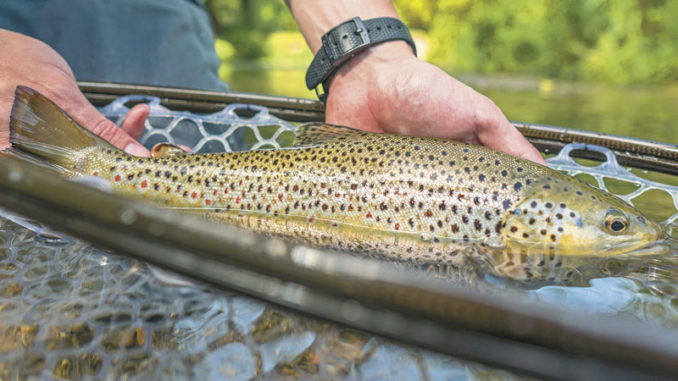
What we can learn from euro-nymphing
Euro-nymphing is a unique technique, and anglers can learn something from the practice. A recent article by Allen Gardener (Ditch the Indicator) speaks extensively about not using indicators. Never being a fan of indicators, the article only confirmed my position on the use of them.
The exclusion of indicators is one of the prime benefits of Euro Nymphing, or “high-sticking” with a regular rod/line and no indicator.
Indicators increase the drag of the current and lift the nymph off the bottom, speeding up the drift. This is counter-productive to attracting and hooking trout.
I recall fishing on the Soque River in Georgia with the late Spider Littleton. He recommended using an indicator, and I did catch an 18-inch rainbow using one. When I removed the indicator, I went on to catch several 24-inch rainbows and lost a much larger fish later that day.
Indicators do have their place. When fishing very long casts, it may be the only way to get a good drift. Once when fishing on the Yellowstone River for cutthroat trout, I found it necessary to use indicators. Also, fishing from drift boats may require indicators.
Jig hooks
Another thing Euro-nymphing teaches us is that jig hooks are great for tying nymphs. A jig hook with a bead head (preferably tungsten) will ride with the hook point up. When tied this way, the fly is less likely to snag on stream debris.
At Dodson Fishing Co., Steve Grose advised that they could not keep them in stock because their guides snapped them up. I ordered an assortment of 12 through 18 online. Later, they were available at Dodson, and I purchased some more in sizes 12 through 18, and some smaller tungsten beads.
After tying assorted sizes of nymphs, I have fished them twice, but due to the lack of recent stocking of streams where I fished, a fair evaluation has not been possible.
Benefits of no indicators
- Less drag
- Extended drift
- Not having to constantly adjust depth. This is accomplished by lifting or lowering the rod tip.
- More hook-ups due to less slack in line or leader
“High sticking” is a good technique. When a cast is made upstream, the rod tip is lowered to allow the nymph to sink. As the nymph drops downstream, near your position, the rod tip is lifted. As it passes, drop the rod tip to extend the drift.
Using this technique, more water is covered, keeping the nymph in the visible zone longer.
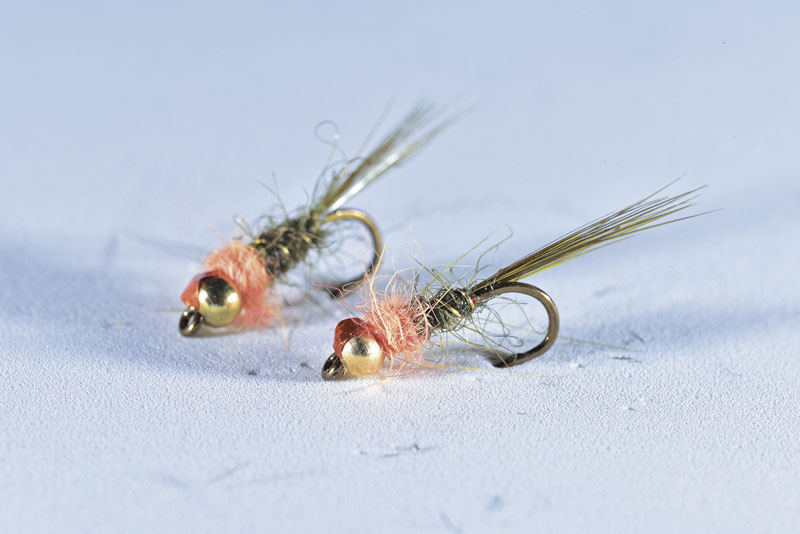
First fish on a fly
It is a wonderful feeling to share the joy of fly fishing. My daughter and her family moved to Colorado a couple of years ago. As a transplanted Coloradan, she felt obligated to learn to fly fish. She has a rod, and I had provided an assortment of flies and poppers.
We went to a small pond in her community, and she fished diligently, even though the fishing was slow. She caught a bass on a popping bug, and now she is definitely a convert to the sport. She and her husband have discussed a drift boat trip in Wyoming, and it should be a great adventure.
NC wildlife stocking schedule
Due to COVID-19, the 2021 stocking schedule was negatively affected. Some public trout waters were impacted and this has extended into early 2022. No trout were stocked in early February and some of the streams did not see stocking until March.
Current plans call for more stocking in April and May, but stocking dates are subject to change. For up-to-date information, please visit ncwildlife.org/fishing/Hatcheries-Stocking.
Due to the lack of stocking of the streams, it is advisable to concentrate on streams that support reproduction of wild trout until a reliable stocking schedule is resumed.
South Carolina stocking
There has been some stocking in S.C. streams. One of the recent popular spots is the Saluda River near Columbia. Approximately, 30,000 trout in the 8- to 11-inch range are stocked each year. This is a tailwater fishery, below Lake Murray. The fish grow rapidly and can exceed 20 inches in two years after stocking.

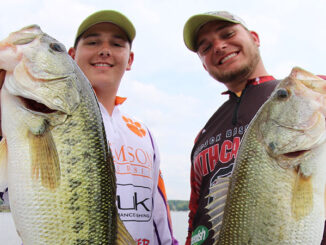
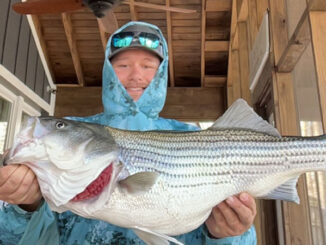
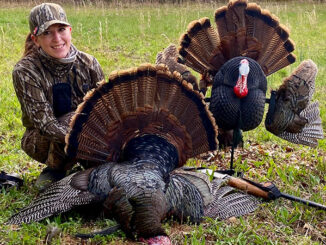
Be the first to comment